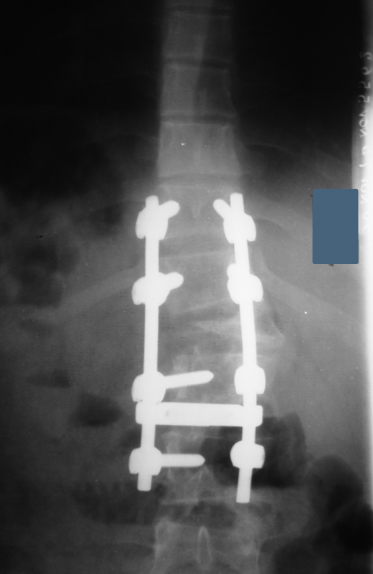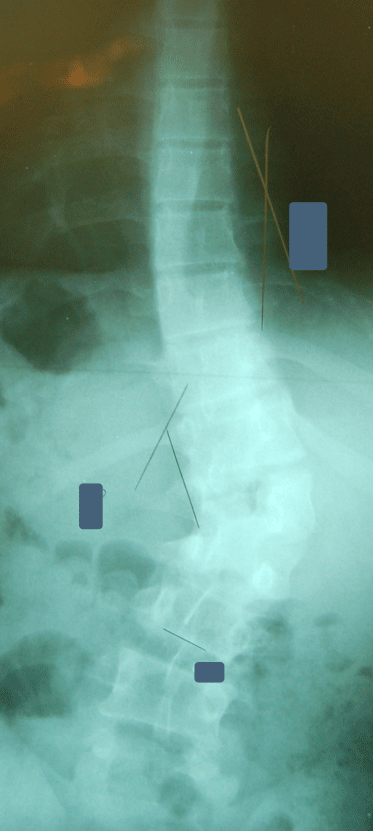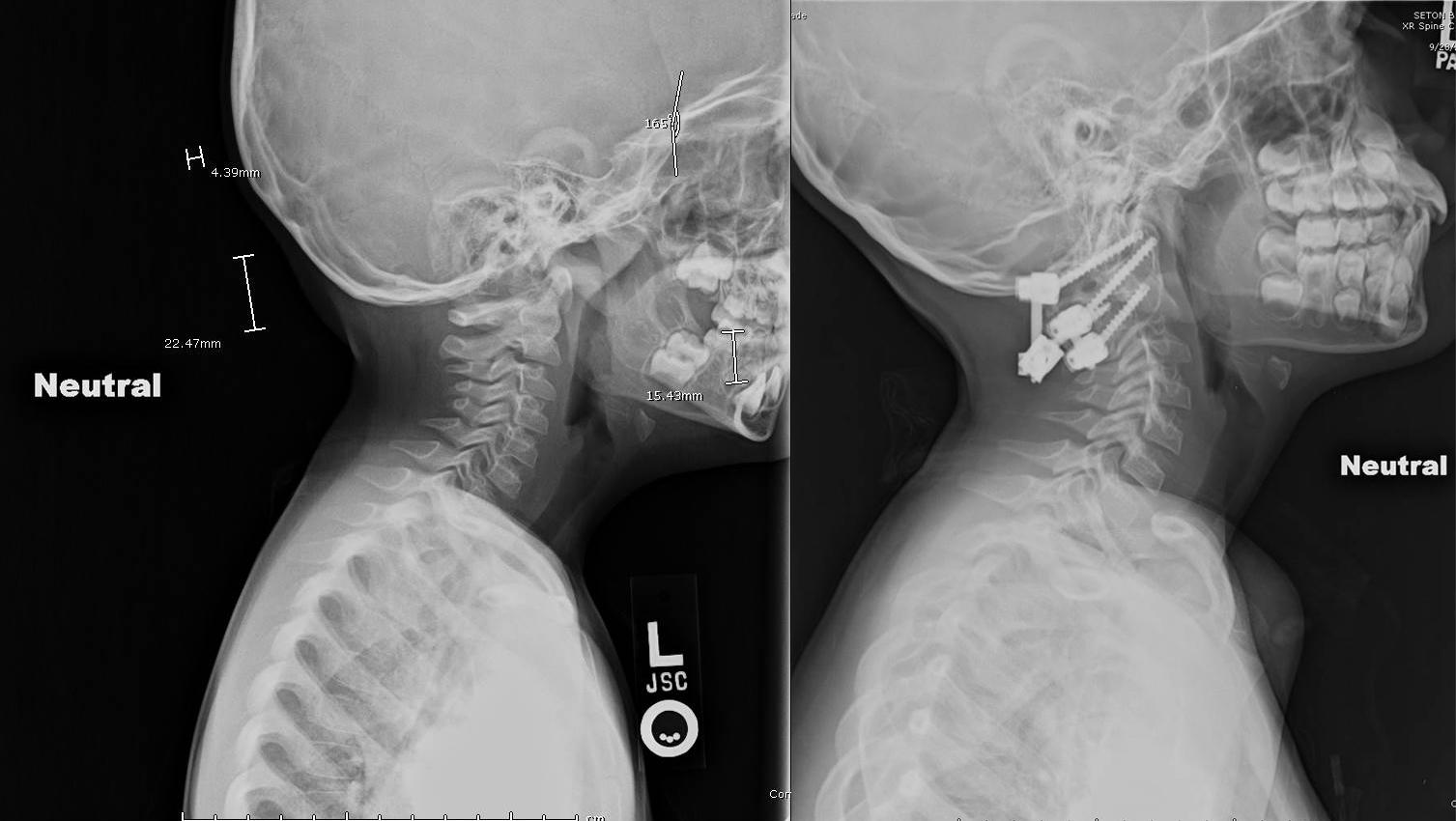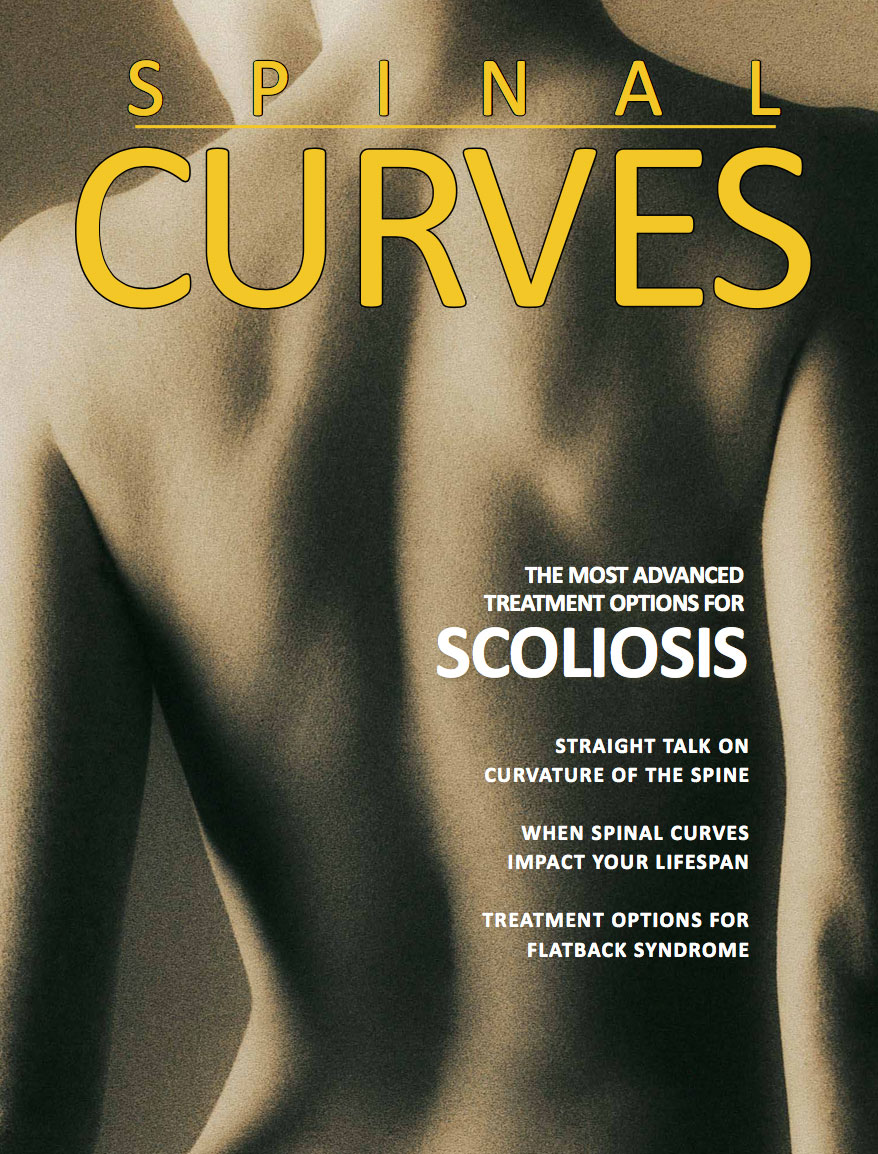Neuromuscular Scoliosis
Neuromuscular scoliosis consists of poor neurologic or muscular control of the spine and might be evident in a child born with cerebral palsy, myelodysplasia or Duchenne’s muscular dystrophy. Children diagnosed with more advanced scoliosis can often feel like they sometimes have trouble breathing and experience back/leg pain among other issues. Treatment should be individualized to maximize function and activity.
 Most kids with non-severe scoliosis will not experience the painful symptoms that are often associated with scoliosis. Kids will usually be diagnosed either at a school screening being performed on the entire grade or by their doctor. Children with detectable scoliosis can appear to have a hump, “S” shaped curve in their spine, and perhaps uneven shoulders and hips while doing the Adams Forward Bending test. School examiners will inform the parent if they believe scoliosis might be present or could develop in their child. If scoliosis is discovered, it is important to see a scoliosis specialists to better evaluate the child and the doctor might take an X-ray for a better analysis. On an X-ray, the doctor uses the Cobb angle method to measure the angulations between the curving of the vertebrae.
Most kids with non-severe scoliosis will not experience the painful symptoms that are often associated with scoliosis. Kids will usually be diagnosed either at a school screening being performed on the entire grade or by their doctor. Children with detectable scoliosis can appear to have a hump, “S” shaped curve in their spine, and perhaps uneven shoulders and hips while doing the Adams Forward Bending test. School examiners will inform the parent if they believe scoliosis might be present or could develop in their child. If scoliosis is discovered, it is important to see a scoliosis specialists to better evaluate the child and the doctor might take an X-ray for a better analysis. On an X-ray, the doctor uses the Cobb angle method to measure the angulations between the curving of the vertebrae.
The potential for the curvature in the spine to worsen correlates with the amount of growth remaining in the bones and spine. The amount of growth the child has left to complete is directly related to the amount and type of treatment he or she will receive since the ‘growth spurt’ years tends to make the scoliosis worse. One of the ways to measure how much growth the patient has left to complete is by taking a radiographic measure of the maturity of the pelvic bone. The Risser sign can be tracked on the pelvic X-ray to better determine if the person has more growing left to complete. The changes of puberty in girls and boys can also give insight if the person has more growing left as well. In girls, evidence suggests that the beginning of the menstrual period estimates 1.5 to 2 years of spine growth remain.
Congenital Scoliosis
 Congenital scoliosis is a condition where there is deformity in the spine present at birth, but will usually only be discovered as the baby continues to grow. Some of the reasons causing this type of scoliosis are abnormally shaped or fused bones in the spine that do not grow or fuse correctly. Kyphosis can be prominent here as well. Treatment should be individualized based on defects present and remaining growth. Emphasis here is to leave defects alone that do not need surgery, and to treat defects early that have large deformity potential.
Congenital scoliosis is a condition where there is deformity in the spine present at birth, but will usually only be discovered as the baby continues to grow. Some of the reasons causing this type of scoliosis are abnormally shaped or fused bones in the spine that do not grow or fuse correctly. Kyphosis can be prominent here as well. Treatment should be individualized based on defects present and remaining growth. Emphasis here is to leave defects alone that do not need surgery, and to treat defects early that have large deformity potential.
Craniocervical problems and Klippel Feil
 We have extensive experience with craniocervical problems in the setting of achondroplasia, Morquio’s Syndrome, other skeletal dysplasias, Ehlers-Danlos, C1 assimilations, congenital basilar invagination, platybasia, and all manner of fractures, instabilities, deformities at the craniocervcial junction.
We have extensive experience with craniocervical problems in the setting of achondroplasia, Morquio’s Syndrome, other skeletal dysplasias, Ehlers-Danlos, C1 assimilations, congenital basilar invagination, platybasia, and all manner of fractures, instabilities, deformities at the craniocervcial junction.
In addition, we also have extensive experience with Klippel Feil syndrome, pediatric cervical stenosis, and other sequelae of congenital abnormalities of the neck in children and adolescents.






